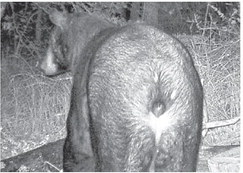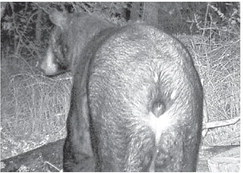Ruffed grouse West Nile virus results now available


The Wisconsin Department of Natural Resources has received results from the first year testing from the ruffed grouse West Nile virus surveillance project.
The three-year study in collaboration with the Minnesota and Michigan Departments of Natural Resources, Ruffed Grouse Society, Wisconsin Conservation Congress and Wisconsin DNR is a region-wide effort to help better understand West Nile virus in ruffed grouse in Michigan, Minnesota and Wisconsin.
Ruffed grouse harvested in Michigan, Minnesota and Wisconsin during the 2018 hunting season were sent to the Southeastern Cooperative Wildlife Disease Study in Athens, Ga., to be analyzed.
West Nile virus (WNV) is transmitted by the bite of an infected mosquito, and there is no evidence that it can be spread by handling dead birds or by consuming properly-cooked game. West Nile is one of several diseases that may, at times, affect native bird species. Signs can range from no clinical disease or illness to heart lesions and inflammation of the brain, the lining of the brain and of the spinal cord. Many factors can influence how severely the virus affects an individual bird.
Beginning in fall 2018, Wisconsin hunters assisted in the collection and submission of 235 of the 720 samples submitted by the three participating states. Hunters who submitted samples and provided contact information will be provided test results via email this week regardless of whether results were negative or positive.
“We are grateful to hunters for taking the time to submit samples from the birds they harvest,” said Mark Witecha, Wisconsin DNR upland game ecologist. “This work is only possible with their support, and we appreciate their patience in waiting for test results.”
Hunter-submitted samples underwent two types of testing to help determine if the birds were exposed to West Nile. First, there was a blood test to determine if the grouse had developed an immune response to the virus. Secondly, there was a heart test to look for traces of viral genetic material. As in humans, ruffed grouse can build up antibodies in an immune response to viruses they encounter. Even when the body fights off an illness, these antibodies are left behind in the blood.
Results from the blood samples indicate that 68 (29%) of the Wisconsin submitted samples had antibodies to WNV either confirmed (44 or 19%) or likely (24 or 10%). Results showed that two (0.9%) of the 235 grouse had evidence of the virus present in their hearts, but as both of these birds had also developed antibodies to the virus (from the accompanying blood test), the results do not directly indicate that these two birds were sick at the time of harvest.
In Michigan, West Nile exposure was detected in 28 (13%) of the 213 ruffed grouse blood samples with exposure to the virus either confirmed (9 or 4%) or likely (19 or 9%). Viral genetic material was found in four heart samples. In Minnesota, exposure was detected in 34 (12%) of the 273 blood samples submitted with exposure to the virus either confirmed (10 or 3%) or likely (24 or 9%). Viral genetic material was not found in any of the heart samples.
West Nile has been present in Wisconsin since 2002 and was first detected in the state’s ruffed grouse population in 2018. Ruffed grouse have likely been exposed to West Nile before 2018. However, previous testing in ruffed grouse was limited.
“Our continued efforts to provide quality young forest habitat for ruffed grouse is our best strategy to
See WNV GROUSE maintain a healthy grouse population that can handle impacts from stressors such as disease or weather,” Witecha said.
Ruffed grouse are one of the most popular upland game birds to hunt. These birds are most commonly known for their distinctive “drumming” noise produced by males during the spring breeding season. Male grouse will display on drumming logs, rapidly beating their wings with the intention of attracting a female grouse. The study may help identify future research needs in Wisconsin, such as a potential survival study to investigate sources of mortality, with WNV being one of many stressors examined.





